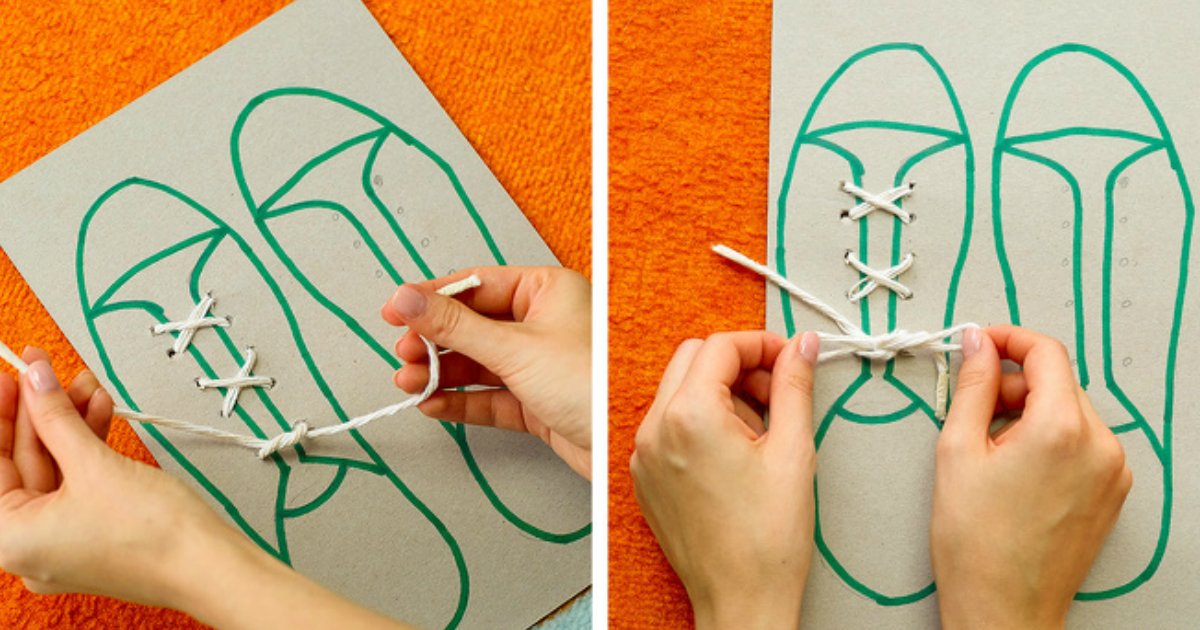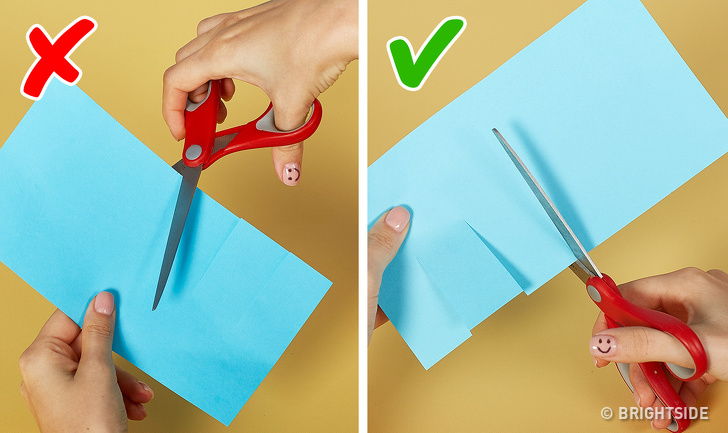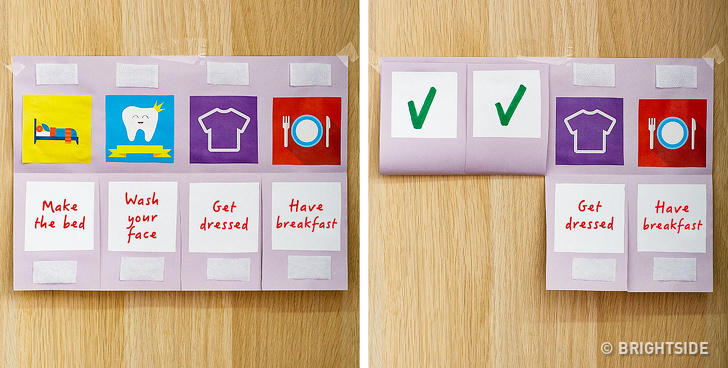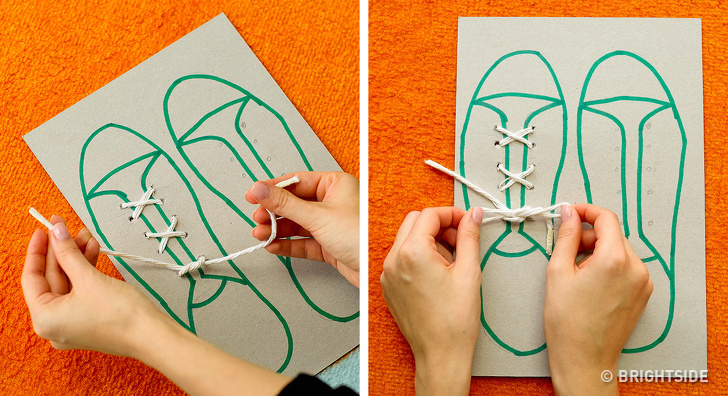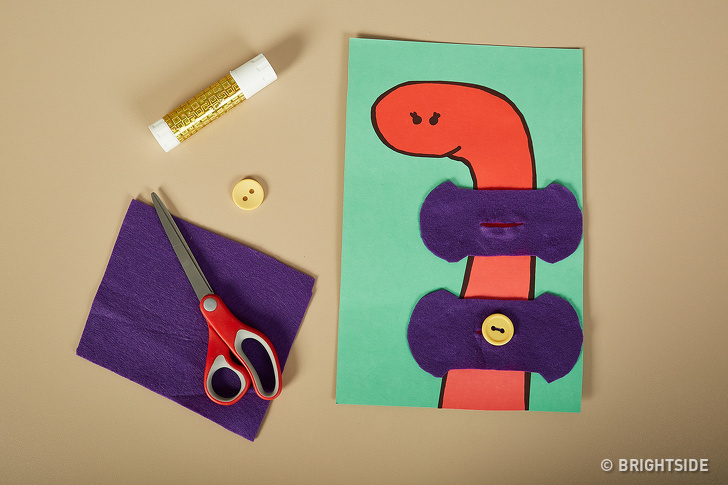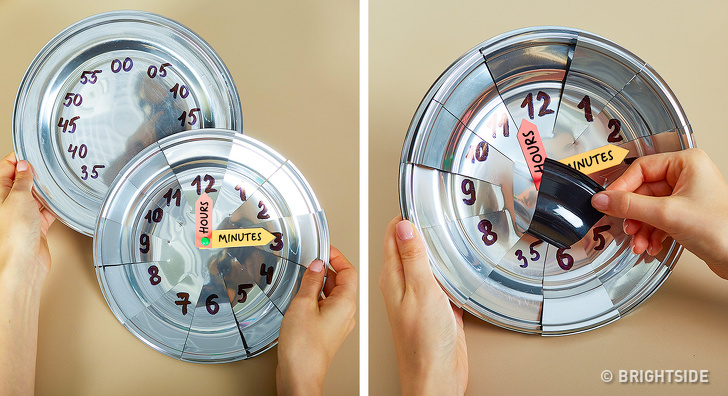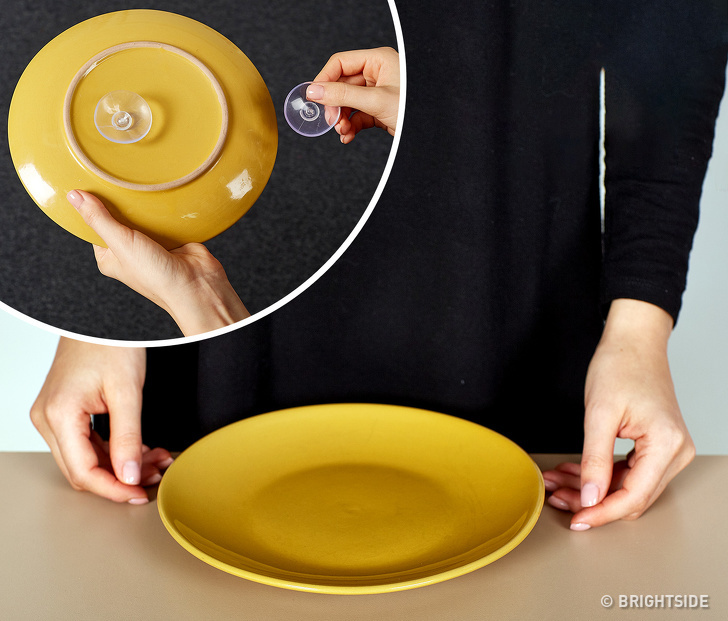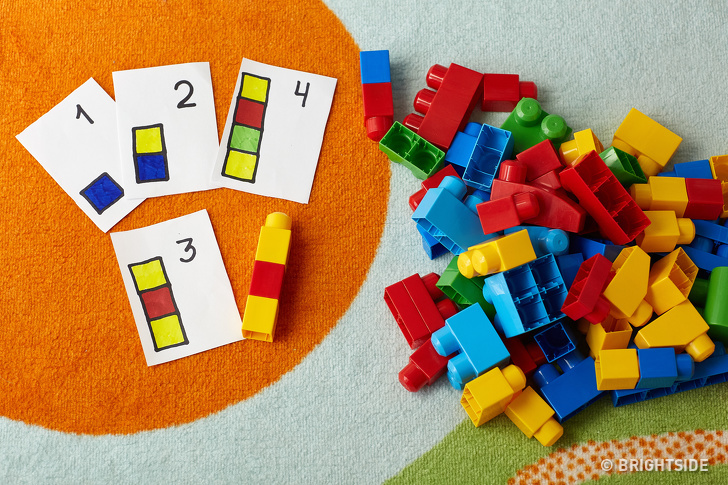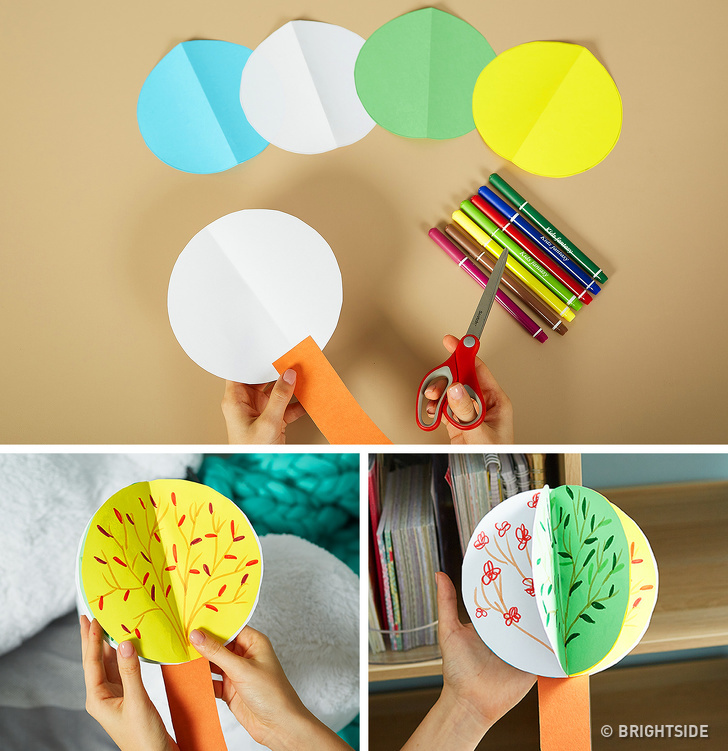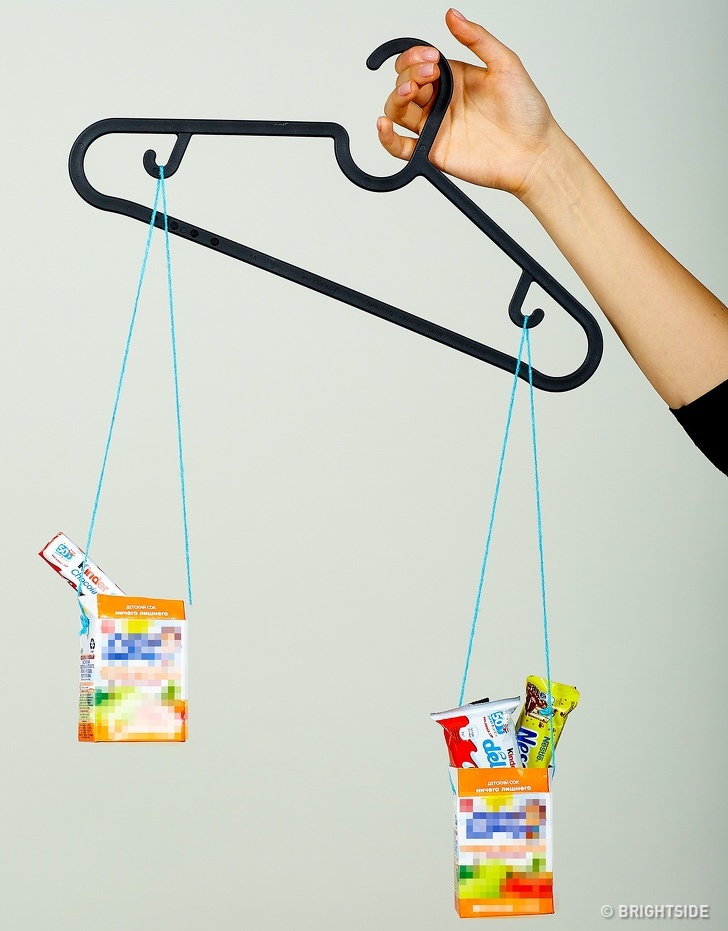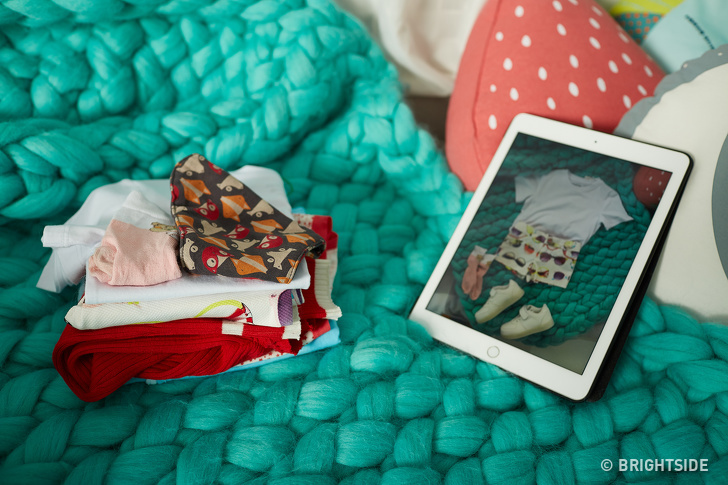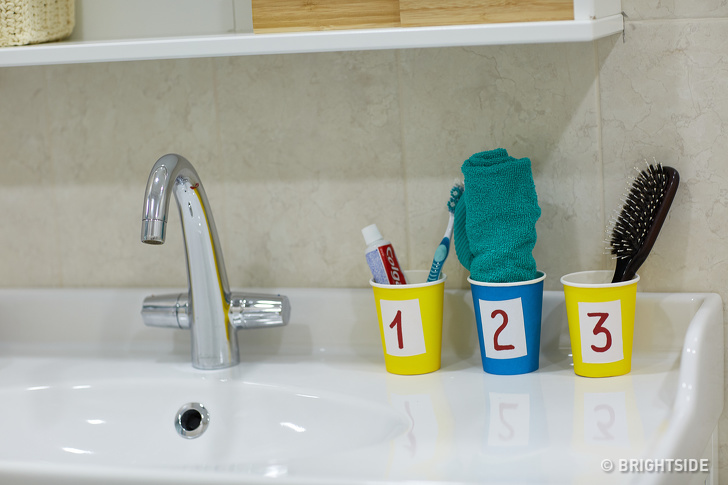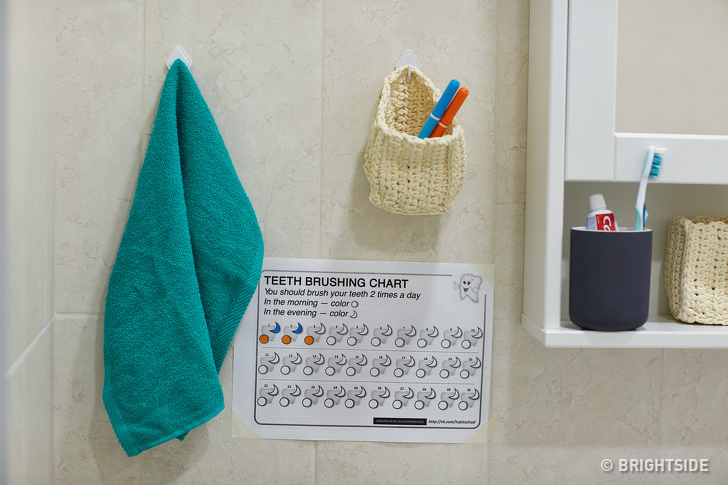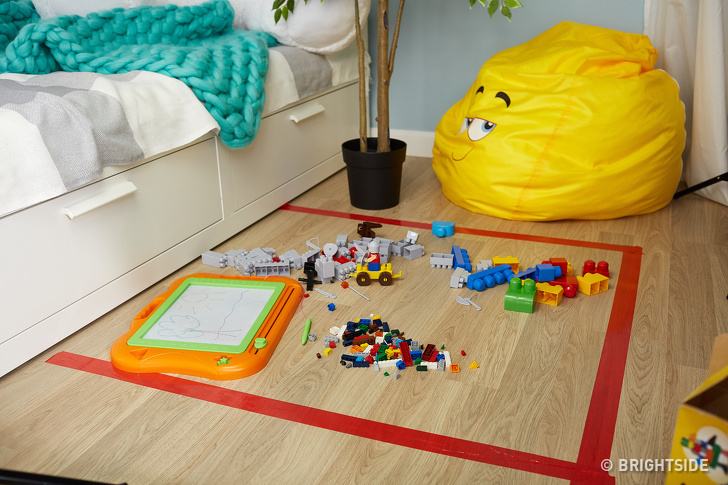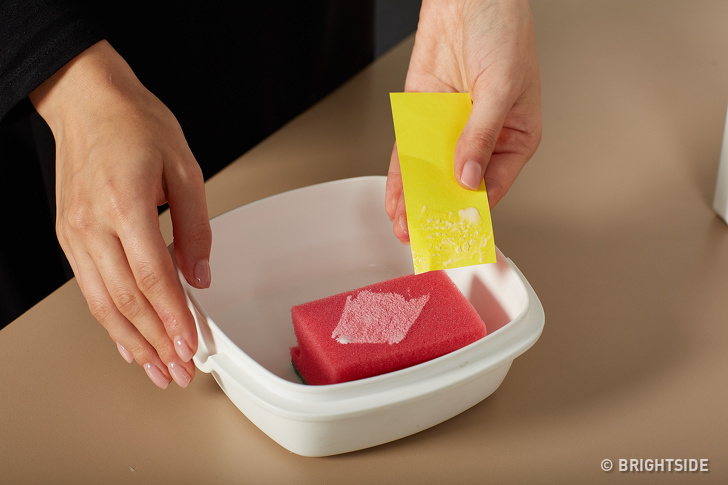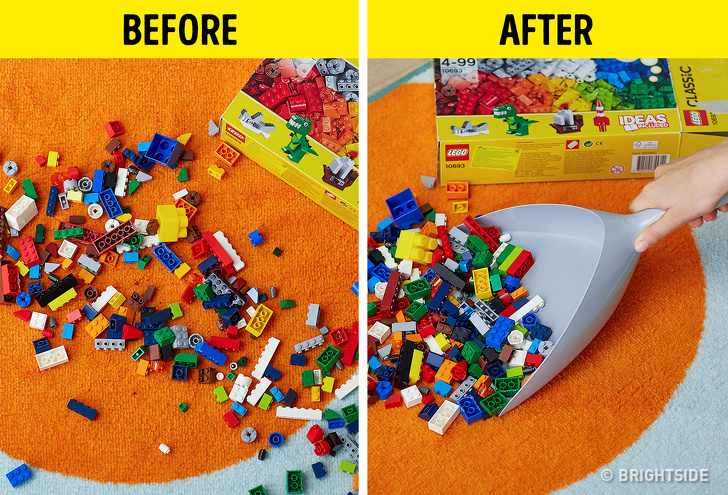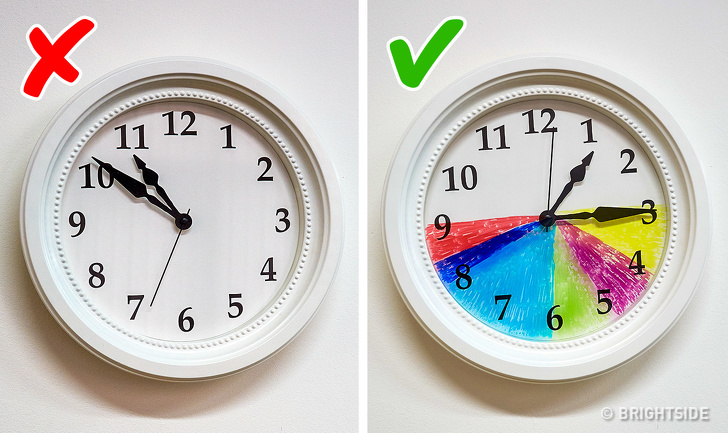An Indian proverb says, “Treat a child as a guest in your home: feed them, educate them, and then let them go.” We agree with this concept and suggest you start learning how to let go of your children starting at an early age.
At SmallJoys, we have found and tried some practical tips that can help make your child more independent.
16. Holding scissors correctly
Children often forget how to hold a pair of scissors correctly. To help a child remember how to place their hand and prevent an injury, draw a smiley face on the thumb and explain that it should always smile right back at them.
15. Learn self-discipline
Here’s a simple method that can help one build self-discipline:
- Take A4-size paper and fold it in half lengthwise. Make small cuts on the lower half.
- Place stickers on the upper and lower parts.
- Write one task in each “window” like “make the bed”, “brush your teeth”, “exercise”, etc. Add some pictures that illustrate these tasks.
- Draw a green check mark on the back of the paper to show that the task has been completed.
You can put this to-do list on the wall in the nursery to remind children about their everyday morning duties and help them to stick to the schedule.
14. Learning how to tie shoelaces
It’s not always a piece of cake to teach a child how to tie their shoelaces.
But what if we drew boots on a piece of cardboard, made small holes, and put shoelaces in it? You can easily take this simulator with you: no more shoes will be scattered around the house and you won’t have to check if a child is playing with clean boots. As a bonus, you can learn new ways to lace up your shoes too!
13. Learning how to use buttons
You can make this fun toy to teach a child how to button and unbutton. Cut a worm out of colored paper, sew buttons on it, and glue pieces of soft fiber with small cuts in it.
12. Learning how to tell time
This simple yet ingenious tip will help you teach children to tell time.
- Take 2 paper plates. Write numbers that symbolize minutes (0, 5, 10, 15, etc.) on the first one. Then write numbers from 1 to 12 and make small cuts on the other plate. Put the first plate under the second one.
- Use a pin and 2 paper arrows with the text “hours” and “minutes” to put the plates together.
- Change the position of the arrows and ask a child to read what time it is on the clock.
Now you can easily demonstrate the connection between minutes and hours. Just bend the upper section on the clock to show that minutes “hide” under the hours.
11. Learning good table manners
Many plates can break while a child learns how to eat and behave at the table. To prevent this damage, just glue 2 suction cups to the bottom of the plate.
10. Learning how to count
A child can learn basic mathematics with colorful Lego blocks.
- Make paper cards and write numbers on them.
- On each card draw a multi-colored tower with the number of blocks that correspond to the number on the card.
A child should build the same tower as described on the card. This task will help put mathematics into practice.
9. Learning the seasons
This handmade toy will help a child remember the seasons.
- Make 5 paper circles out of different colors. The white circle is the basic one. Glue a brown tree trunk to it. Fold the other circles in half.
- Take a circle and apply glue to half of it. Then glue it to the white one. Put the other circles on top of one another and glue them together.
- The last circle should be glued to the base to make a book.
Each circle is a season, so decorate it accordingly. For example, add snow for winter, buds and flowers for spring, and green leaves and yellow leaves for summer and for autumn.
8. Learning about justice
If there are 2 kids in the family, it may be difficult to explain what justice is and why you can’t eat all the candy yourself.
Take a clothes hanger and 2 containers, and paper cups or empty juice boxes. Make 2 holes in the containers, thread a rope through them, and attach it to the hanger. Balance the scales and fill each container with cookies, candy or chocolate bars. Now children will learn how to share and stop arguing about who should get more candy.
7. Learning how to get dressed
Getting ready for school can be fun with the right attitude.
Take pictures of the outfits in advance and ask a child to find and put on these clothes. There’s a chance that this everyday boring task will turn into an exciting detective game.
6. Remembering their morning routine
Put some toothpaste and a toothbrush, a towel, and a hairbrush in different glasses and number them. Thanks to this step-by-step organizer, children won’t forget any of these important steps.
5. Brushing their teeth regularly
Every parent knows that it’s easier for children to learn new skills when they’re playing. So you can turn the boring teeth cleaning process into an exciting quest.
Find a picture on the Internet or draw yourself a teeth brushing chart. Hang it on the wall in the bathroom and place colorful markers somewhere nearby. Ask a child to color this chart every time they brush their teeth: a sun for in the morning, and moon for in the evening.
This method will help a child get used to a new habit. At the end of the month, you can award them with a special prize to keep them motivated.
4. Keeping your home clean
Children love to scatter toys around the house. Try this tip: choose a place where a child can play and mark it with bright scotch tape. Explain to the child that there’s a new rule: no toys should be placed outside this area.
3. Using glue carefully
When a child creates an art project, they usually use all the glue in 5 minutes and cover everything around them in it.
To avoid this unpleasant situation, take a container, put a wet sponge inside, and apply some glue on it. Now a child can just press the paper against the sponge to apply glue to it.
2. Picking up small toys quickly
Lego pieces and other small toys can cause a lot of trouble: parents constantly step on them and it’s quite energy-consuming to clean them up all the time. Just use a dust pan to get rid of the mess quickly. Why haven’t we thought of this before?
1. Sticking to a schedule
A clock and colorful markers can teach your kids time management skills. Just color the parts of the clock in different colors that will indicate different tasks: 5-6 p.m. for homework; 6-7 p.m. for dinner, etc. Explain this technique to a child. It’ll make it much easier for them to stick to a schedule.


